Kodava Hockey Festival 2023: World’s biggest field hockey event returns
Badminton: Ashwini Ponnappa interview – ‘I’m starting from scratch, ground zero’
Ponnappa, 33-year-old former World Championship bronze medallist, has formed a new partnership in women’s doubles with 19-year-old Tanisha Crasto.
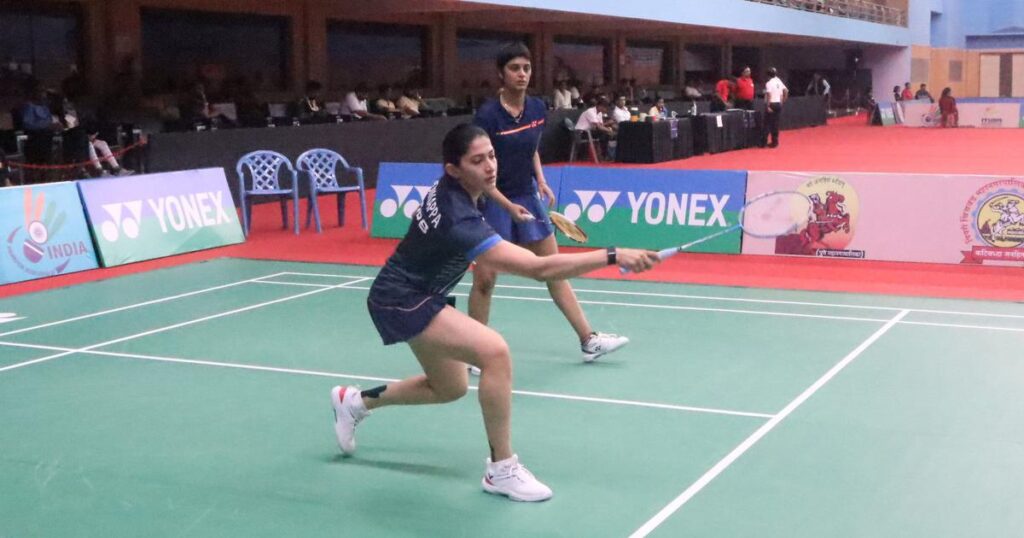
Through the course of her career, Ashwini Ponnappa has been part of many firsts in women’s doubles for Indian badminton. Ponnappa and Jwala Gutta, became the first Indian women to win a badminton BWF World Championship medal (bronze in 2011). She has won gold, silver and bronze medals at the Commonwealth Games and also the women’s team bronze medal at the Incheon Asian Games in 2014. She has been part of Uber Cup bronze medal-winning squads.
But now the 33-year-old, a veteran of the sport in India, finds herself in the nascent stage of a women’s doubles partnership. In December, she made the decision to pair up with 19-year-old Tanisha Crasto for women’s doubles.
The change sees the once world No 10 women’s doubles player now find herself ranked 141 as a pair with Crasto, albeit they’ve played just two international competitions together – a quarterfinal finish at the Super 500 event in Indonesia in January, followed by a first round exit at the Thailand Open Super 300.
A third event was the quarterfinal finish at the 84th Senior National Championships, at the Balewadi Sports Complex in Pune on Sunday as they put up a good fight before losing against the in-form top-seed pairing of Gayatri Gopichand and Treesa Jolly.
It’s a long way back to the top, but in an interview with Scroll in Pune she asserted she’s looking forward to climbing back up the ladder, while also exploring a new role in commentary.
Excerpts from the interview:
How has the new partnership been working for you?
It’s good. Tanisha is young, she’s very energetic. It’s nice to play with that energy. We haven’t really had many tournaments together, we’ve played two and this is the third. But I’m excited to be here at the Nationals, it’s been a while since I played at this competition.
Earlier you had Jwala Gutta as a partner who was senior to you, then N Sikki Reddy who was not much dissimilar in terms of age. Now you have a partner who is 19. Are you also playing the role of mentor?
You could say that. I would say there’s a vast difference from when I started playing with Jwala to the youngsters now. They’ve all been playing international tournaments from when they were 17 or 18. They’ve all been there, done that. The doubles game has changed and the approach has changed. There’s not a lot of mentoring, she is good in mixed doubles and she’s done well there. Women’s doubles is a little different, but it’s good to have someone who moves into the net. She has that energy and speed on the court.
With age have you changed your approach to the game?
Of course. It’s inevitable for that to happen. I can’t be compared to a 19-year-old in terms of fitness and energy on court. I definitely have to be smarter on court towards the game in order to make sure that I can physically take the toll that badminton has on the body. I have to be very mindful of my training and how I approach the game.
Is it about the warmups and cooldowns getting longer now for you?
Yeah. Probably. But I’ve always been someone who had a longer duration for warmup. But cooldown definitely still needs to get better.
Recently we saw a different side to you – as a commentator. How was that experience?
I happened to be at the tournament and they asked me if I’d like to give it a shot. I felt no harm in doing that, although I feel that it’s not my cup of tea in terms of how I speak. I’d love to get better at it.
But I loved the experience. It was fun being on the other side of the TV. Watching players play you see things differently. You see patterns which you otherwise don’t look out for unless you’re getting ready for a match. That was interesting for me.
I sat for five matches during the Thailand Open, it was interesting for me to watch patterns match out of match. Like if one side was slower or faster, how players dealt with it. You understand that the player who is actually smarter on that day in dealing with the conditions has the upper hand. So that was very interesting that way.
Do you feel there were more expectations when you’re in the commentary box? Since people know here’s someone who has played at the highest level, is there an expectation for some insight which you’d not get otherwise?
Yeah, I am supposed to be the expert. The colour commentary part of it. It does get tricky because, that’s what I meant that it’s not my cup of tea. Not in a bad way, but being articulate about what I see, I’m not a journalist, I’m don’t have the lingo for it. So sometimes I feel, ‘what am I saying?’ Sometimes it’s so repetitive. But it was nice. Although I was a bit nervous, it was an enjoyable experience.
Is that something you’re looking to pursue later on?
Maybe later. Honestly, I don’t know. Right now, I’m definitely focusing on the game. But if I get these opportunities in between to commentate, I’ll definitely give it a shot.
What are the kind of things you and Tanisha have to do off-court just to get the chemistry going to gel on-court? And what are the targets?
This was our third tournament together. We’ve sent out entries for tournaments where we haven’t got an entry. But Tanisha will be playing in mixed doubles (with Ishaan Bhatnagar) in those tournaments. We haven’t had so much time in general to build the partnership because it is brand new, we just started. There’s still a long way to go, we still need that bonding time.
Is that, perhaps the target?
I would say the first target is to get an entry.
You mentioned the doubles game has changed. How?
Over the years the whole approach has changed. When Jwala and I were playing, we were kind of like the path-breakers in a way for doubles. There wasn’t a lot before us. Nobody we could look up to, nobody who had ever won. We had a lot of firsts together. But the game-changer has been that youngsters have been given a lot of exposure to tournaments. They’ve been playing tournaments since they are 17 – that was unheard of back then. We didn’t even have those tournaments in India.
Right now we have four international tournaments in India. You’re giving youngsters an opportunity to get that hunger at a very young age because you’re giving them a taste of what international badminton is. Also, everyone is going out, everyone is sponsored. That’s changed.
That’s why you see a lot of youngsters playing and taking it up. Otherwise, our generation, people in the past, they trained a lot, but never played tournaments. I wouldn’t say you didn’t have that talent back then, you just didn’t know. They were just training, they didn’t have the exposure, no push to go out. That has changed, and that’s why we see a rise in a lot of doubles players playing and doing well.
It’s because they’ve been pushed from a young age, getting out to participate, get that exposure, start training at a young age. These girls are 19. At that time, at 19, nobody was really encouraged to go out.
Yet you’ve remained relevant throughout this. What’s been the changes you’ve had to make in the way you approach the game to continue playing at the highest level?
I would say, I still need to get to the top. I have, in the past. But currently I’m starting from scratch. Ground zero. It’s challenging because you’ve been there and you’re coming back all the way down. It’s a reset.
source: http://www.scroll.in / Scroll.in / Home> Badminton / by Shahid Judge / February 27th, 2023
From Coffee To Cricket: The Impressive Ventures Of TripOnn Premium Coffee, Founded By Dr Nrupathy Manay

New Delhi :
If you’re a coffee lover who craves nothing but the best, then you’ll want to check out TripOnn Premium Coffee. This luxurious Indian coffee brand was founded and conceptualized by the visionary Dr Nrupathy Manay back in 2004, and it has been delighting coffee connoisseurs ever since.
What sets TripOnn Premium Coffee apart from other brands is its commitment to using only the finest, most premium Robusta and Arabica beans in its products. Plus, their coffee is organic and naturally grown, making it the perfect choice for health-conscious individuals.
But it’s not just the quality of the beans that make TripOnn Premium Coffee so special – it’s also the unique, sweet, and robust flavours that they offer sourced from Multiple premium coffee estates from the highest peaks of Coorg. Whether you prefer classic Vanilla, Hazelnut, Almond, Coco Orange, Caramel, or Cardamom, there’s a flavour for everyone.
Leading the charge at TripOnn Premium Coffee are Trishma Singh, the COO and Hiten Singh, the Head of Marketing Communications.
TripOnn Premium Coffee is making waves in the global market and will soon raise investment from global investors to compete with the best coffee brands worldwide.
However, we are yet to get the actual figures for Investment and the names of investors, which Ms Trishma Singh said will be disclosed soon.
And if that wasn’t impressive enough, TripOnn Premium Coffee is also the proud owner of ‘Knight 11 The Strikers,’ a well-respected cricket team at the domestic level. So if you want to sip on the best coffee while watching your favourite sport, TripOnn Premium Coffee has got you covered.
source: http://www.ahmedabadmirror.com / Ahmedabad Mirror / Home> Others> Special / February 28th, 2023
Kodagu Golf Open Championship Teed Off
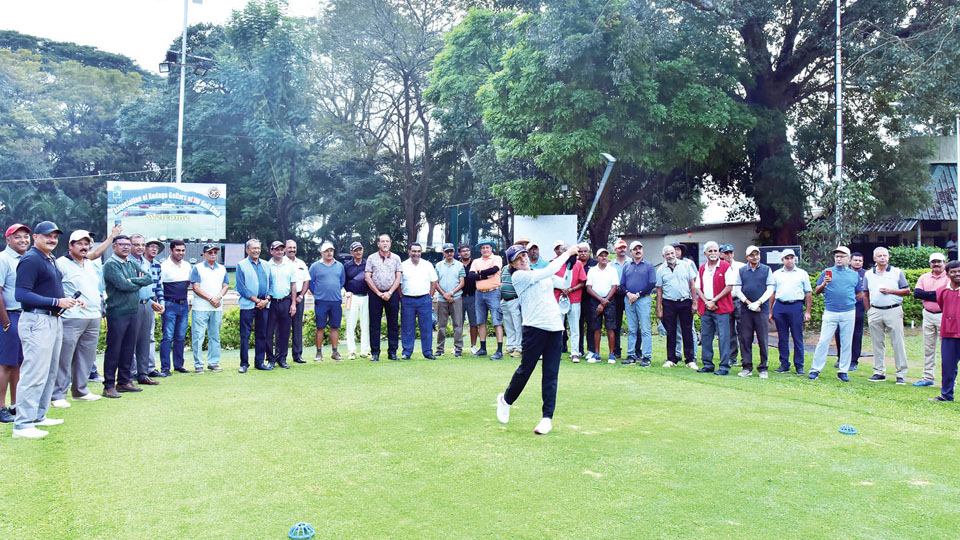
Priya Kushalappa is seen teeing off to inaugurate the 21st Edition of Kodagu Golf Open Championship – 2022, sponsored by Association of Kodagu Golfers of J.W. Golf Club, at J.W. Golf Club this morning.
B.M. Nagesh (President, JWGC), M.R. Mohan Kumar (Hon. Secretary, JWGC), Keerthy Kumar (Hon. Treasurer, JWGC), K.S. Sudheer Bhat (Chairman, Tournament & Handicap), H.C. Subramanya (Committee Member, JWGC), M.S. Yehswanth (Committee Member, JWGC), M.A. Bopanna (Committee Member, JWGC), Dr. P.A. Kushalappa (President, Association of Kodagu Golfers of JWGC), M.B. Nanaiah (Treasurer of Association of Kodagu Golfers of JWGC), C.B. Changappa (Secretary, Association of Kodagu Golfers of JWGC) and other JWGC Members were present during the inauguration.
173 golfers are participating in the two-day championship
source: http://www.starofmysore.com / Star of Mysore / Home> Photo News / December 10th, 2022
Mysuru Excels In Kodagu Inter-School Athletic Championships
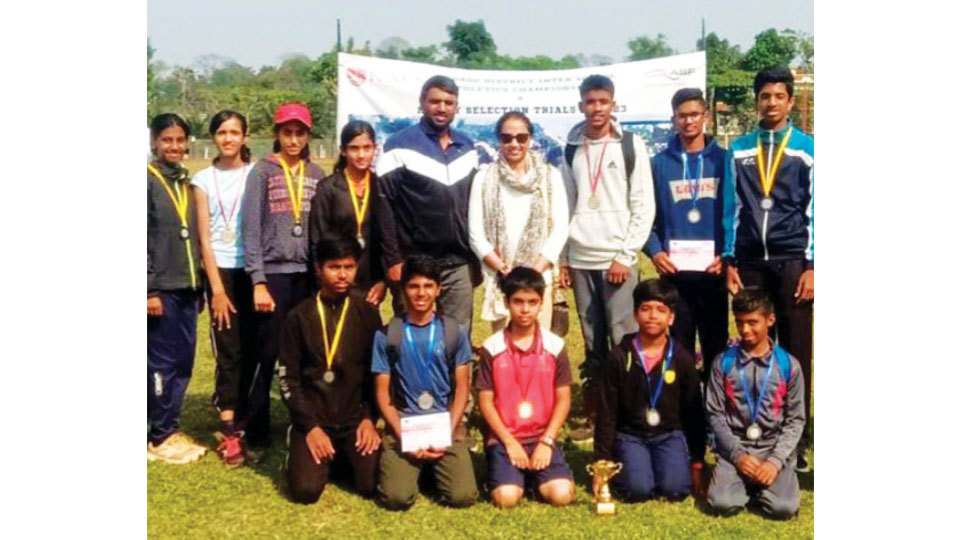
In order to motivate budding athletes, Olympian Ashwini Nachappa’s Sports Academy had organised the Track and Field Championship event for kids under 12, 14 and 16 years at KALS Grounds in Kaikeri, Gonikoppal, on Feb. 7.
Students from various schools in Kodagu, Mysuru, Bengaluru and Mandya participated in the event.
The following students from Mysuru district, coached by Puneeth of Mysore University, have secured a total of 3 Gold, 5 Silver and 8 Bronze medals:
Girls Category
U-16: Charvi – Bronze in 600m; U-14: Ishana Devaiah Pykera (Excel Public School) – Gold in 600m and Silver in 200m; H. Saha (St. Joseph’s School) – Bronze in 600m; U-12: Nischitha Gowda (Vijaya Vittala School) – Bronze in 600m and 100m.
Boys Category
U-16: M.N. Vipul (Sadvidya High School) – Gold in 100m and in 200m along with Individual Championship; Madhu – Silver in 100m and 200m; Kishan – Bronze in 800m; U-14: Ayish – Silver in 200m; Ishaan – Bronze in 100m; U-12: Chiranth – Silver in 600m; Adithya, Shireesh – Bronze in 600m.
source: http://www.starofmysore.com / Star of Mysore / Home> News / February 21st, 2023
Kodagu farmers suffer as Animal Husbandry department has over 75 per cent staff crunch
The over 75% vacant posts in the department have seriously affected the functioning of the department and farmers involved in animal husbandry are unable to treat their cattle.

Madikeri :
Primarily an agriculture district, Kodagu farmers are also actively involved in animal husbandry and dairy farming.
However, the farmers of rural areas are unable to avail of proper healthcare facilities for their domesticated animals as the Department of Animal Husbandry and Veterinary Services in the district faces a staff crunch of over 75 per cent.
Dairy farming is one of the main occupations alongside agriculture across several parts of Kodagu – especially in Somwarpet and Kushalnagar taluks. Farmers across Kudige, Kudumangaluru, Seegehosuru, Huduguru, Madapura and surrounding villages are extensively involved in dairy farming and animal husbandry.
“Farmers spend lakhs of money to buy hybrid cattle. However, we are unable to avail proper health care for the cattle as the veterinary hospitals and the veterinary primary clinics across the villages are not posted with doctors,” explained Nagraj Shetty, a farmer in Kudige limits.
The district’s animal husbandry and veterinary services are sanctioned with a total of 306 posts. However, only 76 posts are filled to date. While the department is sanctioned with 50 posts for veterinary doctors, only 18 posts have been filled and this includes the posts of Deputy Director and other authoritative officials. Out of the sanctioned 78 posts for veterinary inspectors, only 29 have been filled.
And only two posts of veterinary helpers out of the sanctioned 43 posts have been filled in the department. The over 75% vacant posts in the department have seriously affected the functioning of the department and farmers involved in animal husbandry are unable to treat their cattle. The farmers cannot avail of private services as the district lacks private veterinary hospitals.
“Several postings were made by the state, but the same was cancelled due to a stay order. Fresh postings have not been made to the department and we are still looking forward to the new postings,” shared Dr Suresh Bhat, the Deputy Director of the department.
He added that the posted doctors are visiting the hospitals once a week and are managing the functioning of the hospitals. While the district has a total of 72 veterinary hospitals including the primary veterinary clinics, they are rendered useless without permanent postings.
source: http://www.newindianexpress.com / The New Indian Express / Home> States> Karnataka / by Prajna GR / Express News Service / February 22nd, 2023
DJ Nikhil Chinapa Opens Up About VH1 Supersonic Music Fest: “A Well-Curated Artist Lineup Doesn’t Require International Names…”
Vh1 Supersonic curator Nikhil Chinapa said that it is not important to emphasise on international names to have a well-curated artist line-up,
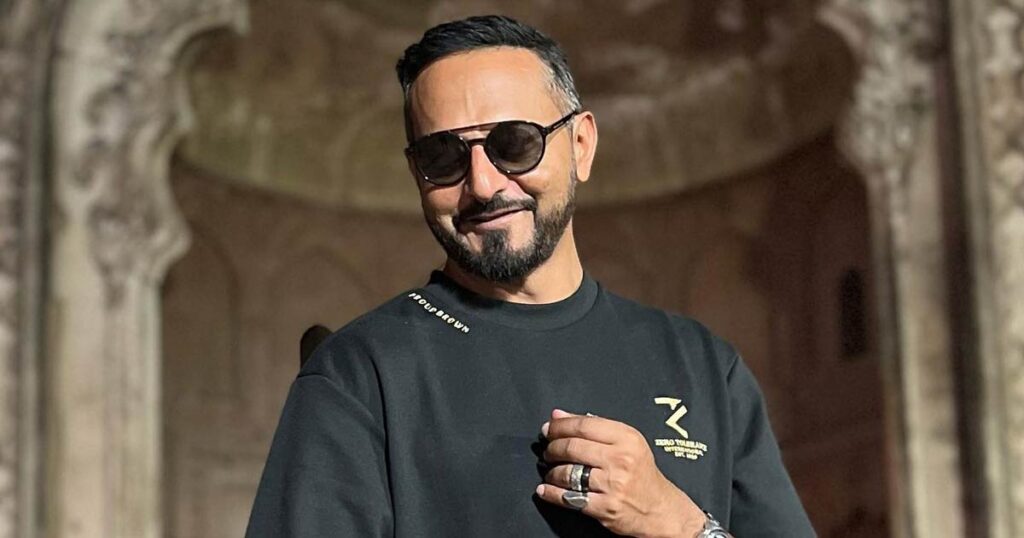
Host, DJ and Vh1 Supersonic curator Nikhil Chinapa said that it is not important to emphasise on international names; but having said that, curating a lineup with artistes one doesn’t normally get to witness, is a part of the plan for his music festival.
The event will see the who’s who of the music world such as American rapper Tyga, English singer Anne-Marie and Nigerian singer-songwriter CKay among many others.
About how important is it to add international names, Chinapa told IANS: “It’s not. Having a well-curated artist lineup doesn’t require an emphasis on international names. That said, curating a lineup with artists you don’t normally get to witness, is a part of our plan. This includes Indian artists who haven’t been to Pune as well as international talent visiting India.”
Nikhil Chinapa is one of the most prominent faces in the music world. He is credited with popularising Electronic Dance Music (EDM) among the Indian youth. He is also known as the Father of Indian Dance Music for his various contributions towards revolutionising the outlook of Dance Music in the country.
Talking about his favourite hotspots where he’s performed and the best venues for performance in the country, Nikhil Chinapa said: “It depends on what we call ‘the room’ – which is more than the venue, it’s also the people, the vibe, the sound system etc. The best rooms are the ones where people come for music, as opposed to selfies. I’m not hating on selfies in a club though… or wait, maybe I am – but just a little bit!”
What is that one thing that is missing in the music scene in India? The 49-year-old, who has been instrumental in popularising DJing as a profession, answered: “Quality music journalism and significantly fewer selectors (music curators, playlist geeks, culture visionaries) than what I would expect a music population as large as ours to have.”
source: http://www.koimoi.com / koimoi.com / Home> Television & Web / by IANS / February 24th, 2023
Moral stories from the south
Giving his childhood memories the form of the written word, author Nitin Kushalappa puts the spotlight on south India’s folklore in his latest book meant for all age groups .

Chennai :
It was during his school days that the English translation of Pattole Palame, a compilation of folklore, released, mesmerising author Nitin Kushalappa MP. “After school, I would visit Gangaram’s, take the book from the shelf, read it for a while and place it back when it was time for me to leave. I did this until I was able to collect some pocket money over several months, from the change I could spare from bus fare tickets and tea snacks. With this money, I bought the book at Gangaram’s finally,” he shares.
It was this and perhaps several other stories he had heard from his grandparents and relatives that made Nitin take a liking towards folklore. He began reading, writing and seeking more of it. A compilation of his years of living with folklores is Dakshin – South Indian Myths and Fables Retold. The book on moral stories has 15 retellings of regional folk tales from the southern states. There is the story of Bala Nagamma, the Moon Prince, the cat and the fly and other famous regional tales, which might be lesser-known to English readers.
Each chapter ends on a moral note. Nitin says that there were more than 15 stories he had written for the book and the themes ranged from love and religion to spirituality and death, which was dropped keeping in mind the audience.
Nitin calls himself a “random reader” and this book was a long time in the making. With a day job as an engineer, he makes time for his passion. “I do enjoy reading, writing and studying. I did my writing work during the weekends or when I was free. I have had to make some sacrifices, and cut down on time with family and friends. My latest book brought out the child in me and with it many of my childhood memories,” he shares.
Excerpts follow:
Can you tell us about your childhood with your grandparents, the kind of stories you listened to?
My grandfather was in the army. He told us stories about Coorg and tales that he heard in the army. My mother and my uncles were also storytellers, and our other relatives had stories to tell too.
Both sides of my family had many books in their houses. I spent a lot of my time in these home libraries. I read comics, fiction, non-fiction and various other genres. Some of the Indian comics, especially Amar Chitra Katha, were based on mythology and folklore.
At home, my parents deliberately didn’t allow us to have satellite television. This was to ensure that we read books. Hence, books were what entertained us. There was only Doordarshan for us. Once in a while, when we visited friends or relatives, I remember watching television at their places.
Some of our school teachers were great storytellers. I remember one primary school teacher, Mrs Leo in particular. I spent a lot of time in our school library. I began writing as a kid. I would write down stories that I heard and read. As I grew up, I somehow didn’t discard these notes.
What was the idea behind Dakshin?
Some years ago, I was reading AK Ramanujan’s books on Indian folklore. I liked the methods he used while recording and narrating the stories. I was also reading folklore from Europe, North America, Bhutan, Bihar, Marwar, Punjab and other regions, besides mythical stories and fables.
There is one particular song called Govina Haadu. It is a popular Kannada song which was taught to children. I learnt it in my school textbook. Nearly everybody in Karnataka knows this song. I have heard several people quote lines from this song. There is something about this song which makes people emotional or nostalgic. I had translated this song word by word, and kept it aside for some years.
I was also working on my own retellings of the translated songs in Pattole Palame, a compilation of folk songs. I tried searching for different versions in different villages of Coorg, and in other books.
A few years ago, my book agent Suhail Mathur of The Bookbakers and I were chatting online about potential book projects. There was a requirement to write a book of regional folklore. I was supposed to choose a region or a state. My first choice was to write either on Kodagu (Coorg) or Karnataka. But I found that there was not much material on South Indian folklore itself. So I finally decided to write on folklore from south India and the Deccan. Suhail thought it was a good idea and encouraged me to continue working on this. That is when I grew more focussed.
How do you think these lesser-known regional tales can be made more popular?
While preparing for this book, a careful decision was to be made about each story — whether it was worth including or not and how similar or different it was from the original version or the different versions of the tale. We tend to learn more of English and less of our own mother tongues. This has got to do with English becoming the common ground for conversation among people from different languages. If a native speaker doesn’t learn their mother tongue, there is hardly any chance that somebody else will learn it. This way, due to disuse, a language gets lost.
Every language has its stories. Unfortunately, they remain within the language. With globalisation, languages are quickly disappearing. The Kodava language, also called Coorgi, Coorg or Kodagu, is an endangered language. When a language disappears, the knowledge that was associated with it also disappears. A lifestyle and culture which goes with the language vanishes as well. Translations are unable to completely capture the essence of a story in its original language.
How do you want this book to make an impact?
These days the visual media has taken up space from the print media. Not many people read books. In the past, parents and caretakers would tell children stories to make them eat and sleep. These days, we tend to allow them to watch YouTube and other videos on smartphones and television. Visual media leaves less room for imagination. Children get addicted to devices and tend to lose out on their creative skills. I hope the habit of reading books makes a comeback. Most successful storytellers are often not authors but script writers. We cannot stop the march of globalisation and progress. Also, I hope filmmakers would make more movies on folklore in our country.
Why is Coorg often a central subject in your books?
I was born in Coorg and brought up in Bengaluru. My entire education was in Bengaluru. My younger sister and I would spend our vacations in Coorg. I would write on various topics. Around ten years ago, I began a blog. I also wrote to the newspapers. I noticed that my articles on Coorg found more acceptance than my other articles. This must be because a number of people consider me to be an expert on matters pertaining to Coorg. So, I continued to write a lot on Coorg.
The lessons from each of the stories in the book are plenty, yet you mention only one or two at the end of each chapter. Was it with the intention of making parents and children draw their own interpretation?
To be frank, I initially had long paragraphs on the lessons learnt. The editor Arpita Nath wisely recommended just a couple of lines for each moral lesson and made cuts wherever required. The children and their parents can then go back to the story and discuss it in detail among themselves and understand the lessons better.
What’s in the pipeline?
I hope to write more books for children and for other audiences as well. There is another book in the pipeline, this time for older audiences. The manuscript is complete. I have sent it to my book agents Suhail Mathur and The Bookbakers.
Book: Dakshin – South Indian Myths and Fables Retold
Publisher: Puffin Books /Pages: 236 / Price Rs.299
source: http://www.newindianexpress.com / The New Indian Express / Home> Cities> Chennai / by Anushree Madhavan / Express News Service / February 27th, 2023
How Kodavas lost their distinct identity – Part I
Can the upcoming Census 2021 and the Karnataka assembly polls bring the spotlight on the decades-old demand of the Kodavas?
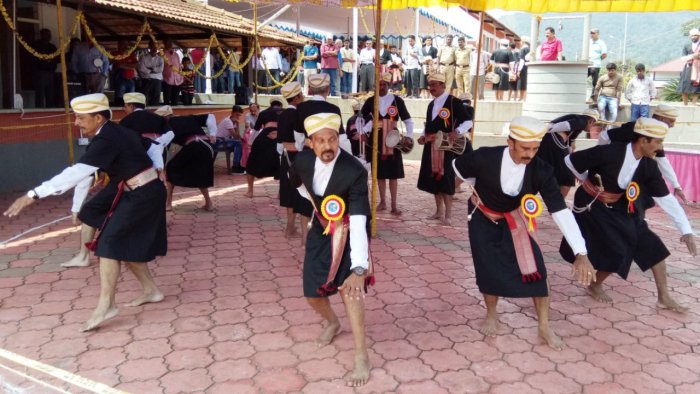
What is a common thread that runs through the following names: Field Marshal KM Cariappa, former Indian hockey team captain MP Ganesh, former Union minister CM Poonacha, sprinter Ashwini Nachappa, and actor Rashmika Mandanna? More than being celebrities in their chosen field of work and belonging to Karnataka, they all trace their origins back to Kodagu district, about 250 kms west of Bengaluru.
Kodavas are a group of people who have a distinct identity — a distinction that is no longer recognised by the State! For decades now the Kodavas have been demanding they be categorised as a distinct group, and two upcoming events could bring to the spotlight on the Kodavas’ cause: the delayed 2021 Census, and the Karnataka Assembly elections.
Unique Identity
The Kodavas were recognised as a distinct ethnic group, even during and much before the reign of the Lingayat rajas who ruled the Kodagu province since the sixteenth century AD. From 1947 till 1956, Kodagu was included in the list of Part C states along with Ajmere, Bilaspur, Bhopal, Tripura, Manipur, Delhi, Kutch, Himachal Pradesh, and Vindhya Pradesh. In 1956, on the recommendations of the States Reorganisation Commission, Kodagu merged with the then Mysore (now Karnataka) state as a separate district.
We do not have evidence as regards the Kodavas’ antecedents, and it is widely believed that they were migrants to the region during the third or fourth century AD. Little is known as to where they migrated from, and what made them settle down in the place they have done so. Going by their physiognomy, and compared with the other communities that inhabit the Kodagu district, the Kodavas are quite distinct and different in many ways.
Language, Religion, Customs
The language they speak, Kodava takk, is undoubtedly a Dravidian language in terms of its grammar and syntax, and is replete with words from the other Dravidian languages, besides words from Urdu, and Farsi.
Their religious practices, traditions, and customary laws too vary a great deal vis-à-vis the other religious groups and castes that are the Kodavas’ co-habitants. The Kodavas’ primary, and almost solitary, religious pursuit has been ancestor propitiation. Every Kodava okka (lineage) traces its descent from its Guru Karanava (common male ancestor) for whom they have a kaimada (shrine) in the vicinity of their ain mane (ancestral house).
The Kodavas do not have temples, nor do they solicit the services of any priests, Brahmin or otherwise, in any of their religious practices or rituals. Their marriages, births, naming ceremonies, deaths, etc, is officiated and performed by one of their own elders, and there is no place in these ceremonies for any Hindu rituals or recitations in Sanskrit or any other language.
In effect, they have no link whatsoever with the practices of the chathur varnas (Brahmin, Kshatriya, Vaishya, Shudra) nor do they have any caste affiliation or internal caste divisions among them, but for a miniscule subgroup known as Amma Kodavas who are, ideally, considered to be vegetarians and teetotallers.
Martial Tradition
The Kodavas have had a martial tradition and have been part of the armies of the Lingayat rajas and later of the British. From the time of the rajas, the Kodavas, along with some other communities, have been the beneficiaries of the lesser taxed jamma land tenure, which mandated that they offer their services to the palace for a few days every month. Details as regards these as also many other matters concerning living conditions and life in general vis-a-vis the rulers were notified as 53 decrees/orders by the penultimate raja of Kodagu, Lingarajendra Wodeyar, in the Hukumnama published in 1811. Jamma landholding conferred the right to possess firearms without licence. This practice is prevalent even today.
The 1941 Census came and went, with most of the Kodavas not realising that they had lost, unreasonably, their unique identity. More about that in Part II.
(MA Kalam, a social anthropologist, is Visiting Professor, Centre for Economic and Social Studies, Hyderabad. The author has been researching in Kodagu since the early 1970s.)
Disclaimer: The views expressed above are the author’s own. They do not necessarily reflect the views of DH.
source: http://www.deccanherald.com / Deccan Herald / Home> Opinion / by MA Kalam / February 23rd, 2023

